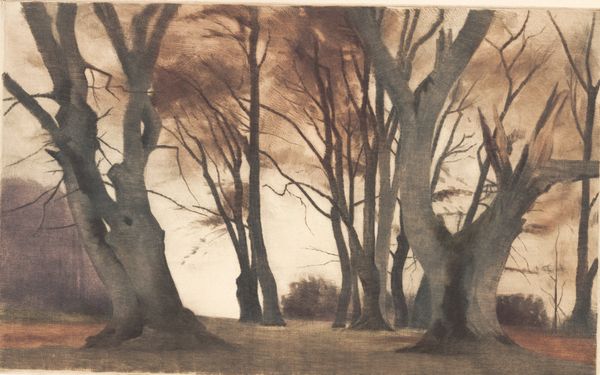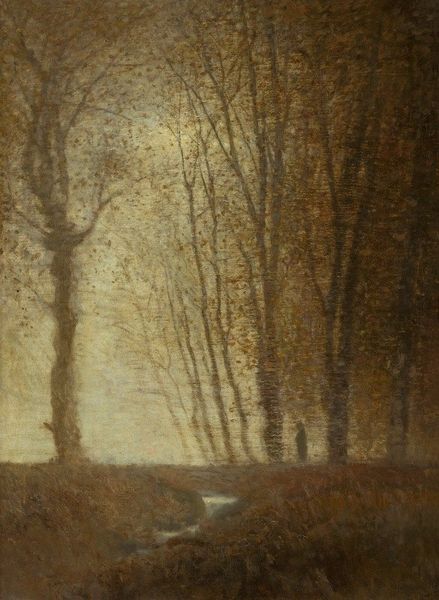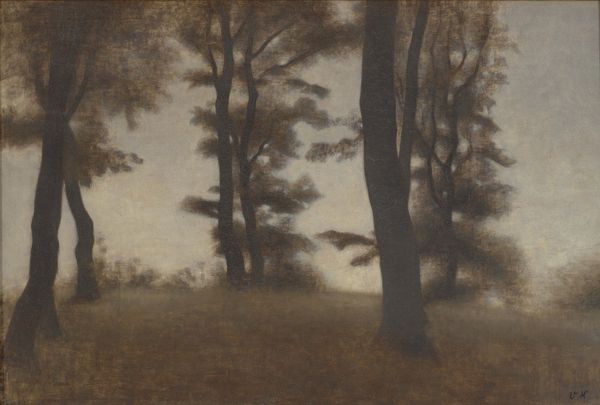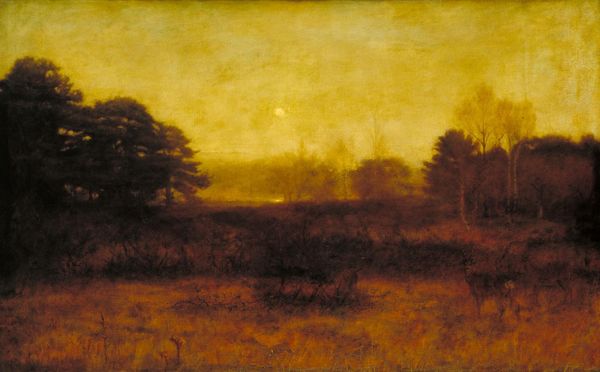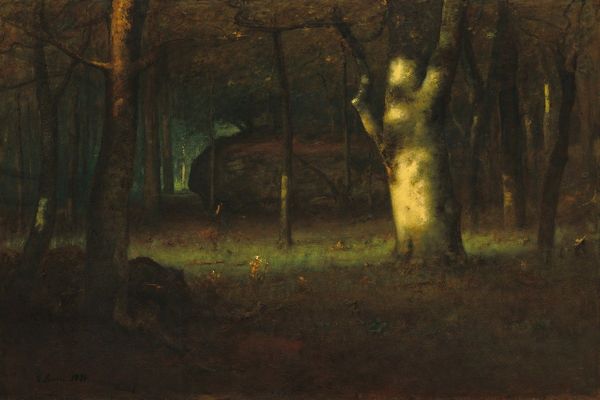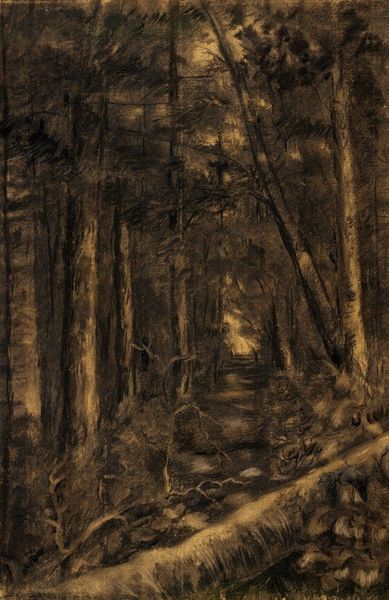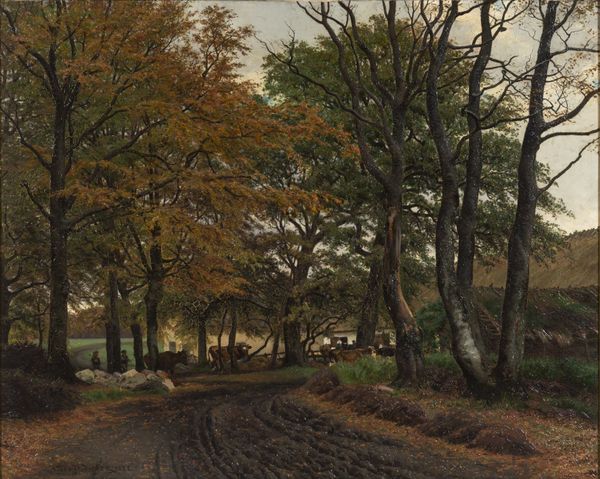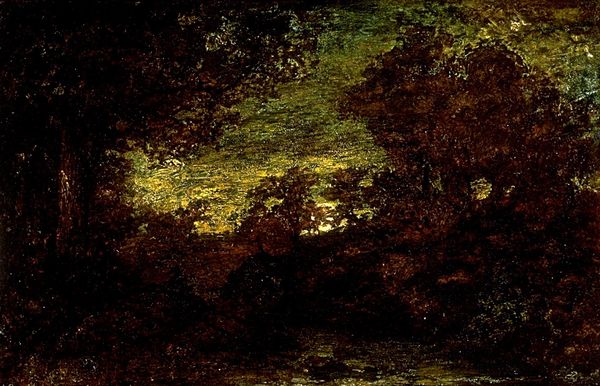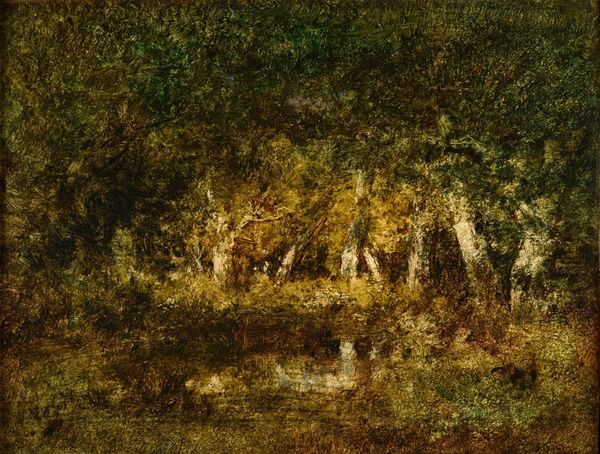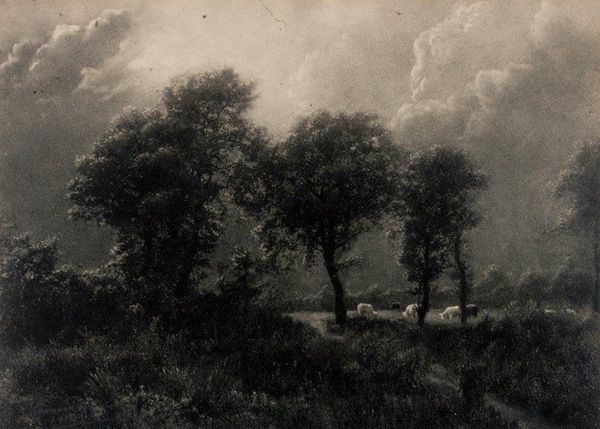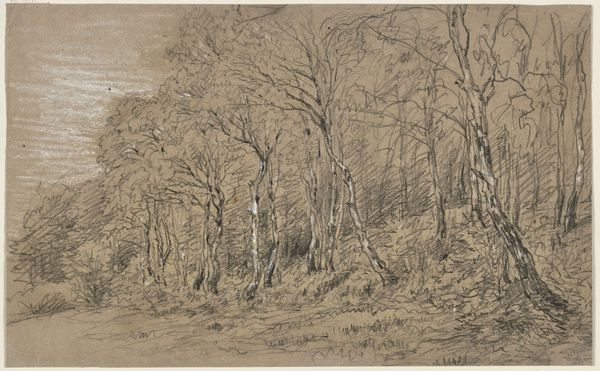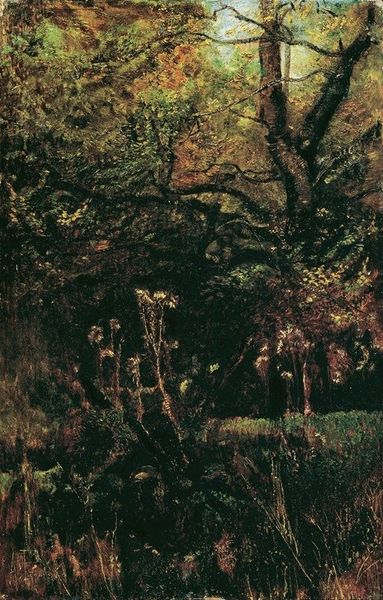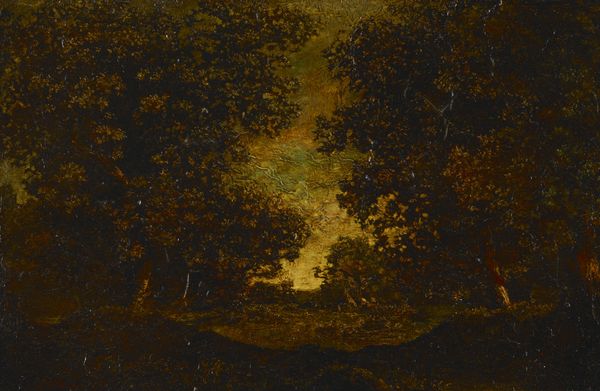
canvas
#
impressionistic
#
water colours
#
possibly oil pastel
#
canvas
#
underpainting
#
fog
#
watercolour bleed
#
watercolour illustration
#
fantasy sketch
#
watercolor
#
mist
Dimensions: 60 cm (height) x 130 cm (width) (Netto)
Curator: Well, hello there! Let me paint a little picture for you - with words, of course. We're gazing upon Anton Teichlein's "The Forest of Fontainebleau," dated between 1835 and 1879. It's an impressionistic canvas presently housed right here at the SMK. Editor: Right away, it feels like stepping into a dream, doesn't it? That overwhelming olive-green hush is incredibly powerful. It reminds me of certain fairy tales and the darker corners of the Brothers Grimm. The palette choice lends the scene an undeniable aura of melancholy, almost sepia-toned in its evocation of memory. Curator: That sense of melancholy really resonates, doesn't it? It strikes me that the forest itself—Fontainebleau, that is—became almost a character in 19th-century art, symbolizing a sort of untamed, authentic refuge, in contrast to burgeoning city life. There's definitely that pull towards a wilder self present in Teichlein's canvas. Editor: Definitely. It's interesting, too, how he employs the symbolism of mist or fog. Psychologically, fog often represents uncertainty or obscurity—a blurring of reality. Given that it could possibly be oil pastel and watercolour work, does that blur intensify that meaning to you? Curator: Precisely! That whisper of watercolor bleed enhances this otherworldly vibe... the edges almost dissolve into each other. As if we are catching this landscape on the periphery, that makes it seem even more ethereal and transient. Maybe that says something about memory itself and our perceptions. The trees, stripped bare, they amplify it. It really is a watercolor illustration of fantasy. Editor: I agree entirely. There is an aspect of memory in there. Beyond that, perhaps Teichlein even uses it to indicate some sort of impending emotional or physical storm, both in terms of visual symbolism, and our understanding of psychological motifs. It all just merges so remarkably into a potent artistic piece that pulls you in to examine your thoughts on symbolism itself. Curator: A fitting end to our ramble in this bewitching forest, don't you think? Editor: Absolutely. Thanks to Teichlein, the path into memory is not a clear one!
Comments
No comments
Be the first to comment and join the conversation on the ultimate creative platform.
